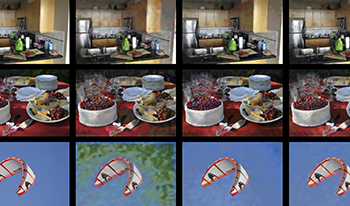While RGB is the status quo in machine vision, other color spaces offer higher utility in distinct visual tasks. Here, the authors have investigated the impact of color spaces on the encoding capacity of a visual system that is subject to information compression, specifically variational
autoencoders (VAEs) with a bottleneck constraint. To this end, they propose a framework-color conversion-that allows a fair comparison of color spaces. They systematically investigated several ColourConvNets, i.e. VAEs with different input-output color spaces, e.g. from RGB to CIE L* a* b*
(in total five color spaces were examined). Their evaluations demonstrate that, in comparison to the baseline network (whose input and output are RGB), ColourConvNets with a color-opponent output space produce higher quality images. This is also evident quantitatively: (i) in pixel-wise low-level
metrics such as color difference (ΔE), peak signal-to-noise ratio (PSNR) and structural similarity index measure (SSIM); and (ii) in high-level visual tasks such as image classification (on ImageNet dataset) and scene segmentation (on COCO dataset) where the global content of reconstruction
matters. These findings offer a promising line of investigation for other applications of VAEs. Furthermore, they provide empirical evidence on the benefits of color-opponent representation in a complex visual system and why it might have emerged in the human brain.

